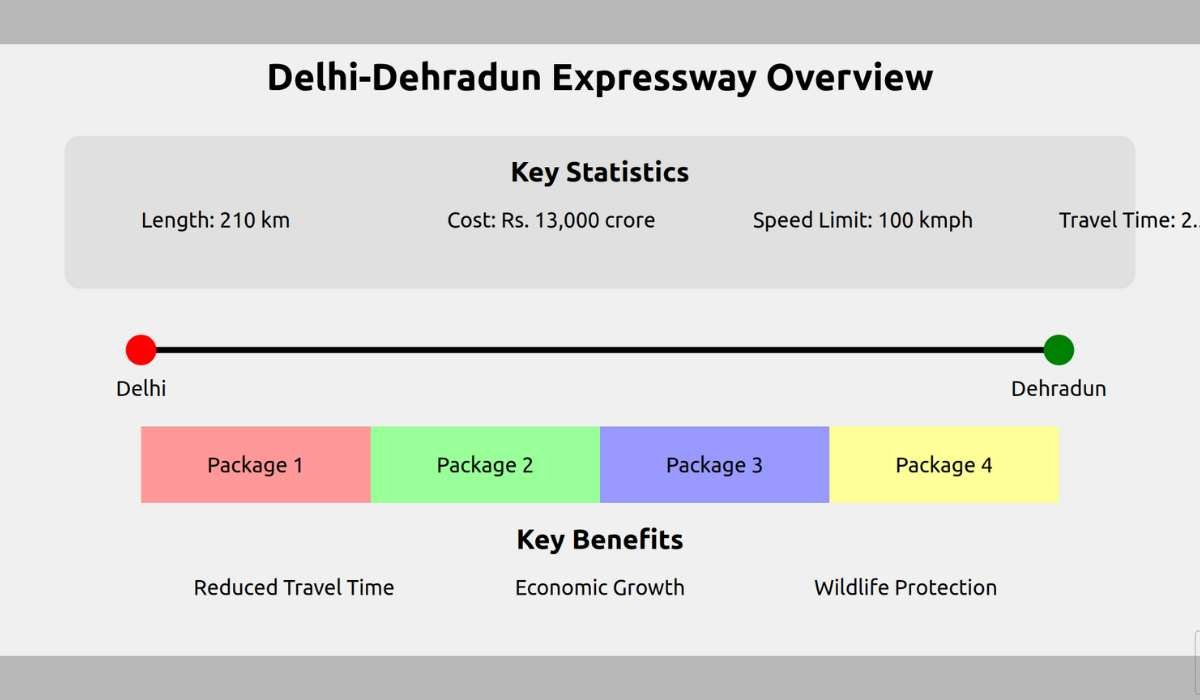Introduction
The real estate sector is a vital component of the Indian economy, serving as the second-largest employer after agriculture. Its importance cannot be overstated, as it contributes significantly to the country’s economic growth and the growth of various stakeholders involved in the sector. Among these stakeholders, investors, particularly developers, bear the maximum risk but also stand to gain the most financially. This study aims to identify the strategies employed by developers to maximize financial returns from real estate projects in India.
Financial aspects play a crucial role in real estate investment in India, with returns depending on factors such as location, user income group, project typology, and government policies. The purpose of this research is to develop a financial model that calculates the financial return from specific real estate project types through case studies. The model will help developers understand the factors associated with real estate profits, how these factors affect financial returns, and how the model can indicate project profit, loss, and risks through infographic indicators. Furthermore, the study will explore how these factors can be modified or adjusted in the model at the planning stage to avoid losses and maximize returns.
The research methodology involves studying general real estate theories, existing investment strategies, and financial strategies in the Indian context. An optimum financial model is then prepared for a specific project type to maximize financial returns, which is validated through another real estate project case study.
Literature Review
2.1 Real Estate Investment
Real estate investment involves selecting sources, possibilities, and methods of raising the value of the investment object (Klimczak, 2010). Real estate property is perceived as an investment asset that generates a certain amount of revenue to its owner, assuming expected risk and liquidity levels (Krulický, 2019).
2.2 Real Estate Opportunities and Benefits
The major benefits in the real estate sector include steady income, long-term financial security, tax benefits, covered mortgage payments, appreciation over time, inflation hedge, decision-making autonomy, and being a landlord (Oyedele, 2018). Ways to enter the market quickly and profitably include real estate mutual funds, real estate investment trusts, short-term rentals, investments in real-estate focused companies, and real estate notes (Pritam Das, 2020). Growth drivers in the Indian real estate sector include rising consumption, knowledge and service economy, demographic dividend, urbanization and household formation, and large foreign capital inflows (Wadhwani, 2009).
2.3 Real Estate Management
Real estate development and management are interconnected with various affiliated subject areas such as marketing management, general management, micro and macro economics, valuation, and planning (Ariyawansa, 2009). Organizations can structure their real estate management using two strategic pathways: choosing between in-house frontline personnel or outsourcing, and deciding whether leasing should be treated as a real estate manager’s task or as a separate function within the organization (Palm, 2013).
Unlock Your Dream Home Today!
Get personalized real estate insights delivered straight to your inbox.
2.4 Real Estate Finance
Real estate investment strategies positively correlate with the financial performance of investment groups (Purity W. Mbogo, 2016). Primary financial topics in real estate include construction finance basics, financing and documentation for lenders, available financing types and strategies, advantages and disadvantages of different financing strategies, specialty financing sources for the largest projects, and real estate profitability (Korte, 2019).
2.5 Real Estate Profitability
A methodology based on the Build-Up Method allows for the evaluation of the profitability index (or rate of return) of a real estate initiative. This methodology has been used in a case study to appraise the extraordinary contribution in three integrated intervention programs in the city of Rome (Battisti et al., 2019).
Preparation of NPV Model for Type C (Retail with Office)
The researchers prepared a Net Present Value (NPV) model for a 3.70-acre plot located in Sector-4, Greater Noida West, Gautam Buddha Nagar, Uttar Pradesh. The model was used to calculate the financial return in terms of NPV for a specific real estate project type and to compare the NPV of different design mix options for the same plot of land.
The steps involved in preparing the model are as follows:
Step 1: Input cost chart
This step involves collecting numerical data related to the plot, such as total plot area, design mix components and their respective areas, ground coverage, Floor Area Ratio (FAR), built-up area, and saleable area.
Step 2: Statutory expenses
In this step, the land cost, approval cost, land and legal costs, and construction costs are calculated.
Step 3: Benchmarking analysis
The capital value of similar real estate projects in the surrounding areas of the case study is collected to forecast the selling price range.
Step 4: Calculation of assumptions
This step involves calculating the saleable price range, receivable amount, project development cost, planning and consultancy fees, total project cost, annual escalation in construction cost, achievable sale price (both higher and lower end), and annual escalation in sale price.
Step 5: Calculation of NPV chart
The cash inflow and outflow for different financial years are calculated, along with the Weighted Average Cost of Capital (WACC) from debt and equity, and the final NPV value.
The researchers considered three design mix options for the case study area:
Table 1: Design mix options
| Type | Type of mix | Floors | Ground coverage | FAR |
|---|---|---|---|---|
| A | Fully Residential building | G+8 | 30% | 2 |
| B | Fully Office building | G+8 | 30% | 2 |
| C | Retail with Office | Retail: 2B+G1 to G4 | 30% | 2 |
| Office: G5 to G7 |
The study focused on Type C (Retail with Office), and the calculations were performed accordingly.
NPV Model Calculations for Type C (Retail with Office)
Step 1: Collecting Data related to the case study plot
The input data table contains information about the plot area, design mix components, ground coverage, FAR, built-up area, and saleable area.
Step 2: Construction cost calculation per unit area
The construction cost per unit area was calculated using the Plinth Area Rate calculation of CPWD 2019. The construction cost per square meter was found to be Rs. 37,943.32, and per square foot, it was Rs. 3,526.33.
Step 3: Construction cost calculation for the case study area
The construction cost for the office and retail components was calculated separately, along with the land cost, approval cost, and land and legal costs. The total construction cost for the project was found to be Rs. 1,479,789,355.85.
Step 4: Benchmarking exercise
The benchmarking exercise was conducted to forecast the selling price range by collecting the rates of similar real estate developments in the surrounding areas of the plot. The price range for office space was found to be Rs. 5,500 to Rs. 7,500 per square foot, and for retail space, it was Rs. 5
,440 to Rs. 6,100 per square foot.
Step 5: Calculation of Assumptions table
The assumptions table was prepared for both retail and office components, including saleable area, saleable price range, receivable amount, project development cost, planning and consultancy fees, total project cost, annual escalation in construction cost, achievable sale price, discount on down payment, and annual escalation in sale price.
Step 6: Net Present Value Calculation
Two NPV models were produced based on the minimum and maximum sale prices obtained from the benchmarking exercise. The minimum and maximum NPV values were calculated for both retail and office components. The total minimum and maximum NPV values for Type C (Retail with Office) were found to be Rs. 175.19 Crores and Rs. 213.74 Crores, respectively.
Conclusion and Inferences
The NPV model prepared in this study offers several advantages for developers:
- Forecasting the return range: By using maximum and minimum selling rates per square unit area obtained from the benchmarking exercise, the model can calculate the Maximum NPV and Minimum NPV, helping developers forecast the return range.
- Identifying important financial terms: The study highlights crucial financial terms that play a significant role in calculating financial returns, such as saleable area, saleable price per unit area, land cost, approval cost, construction cost, duration of construction, construction percentage of each year, construction and other costs of each year, sale percentage of each year, sale amount of each year, cash flow analysis, WACC calculation, and debt and equity percentage.
- Factors indicating profit and loss: The model identifies factors that indicate the profit or loss of a project, which is essential from an investor’s perspective for making informed decisions.
- Design mix options: The model can calculate the NPV of specific types of real estate projects, enabling developers to create design mix options by combining different project types for maximum financial return on the same plot of land.
In summary, the NPV model developed in this study serves as a valuable tool for developers to make informed decisions and maximize financial returns from real estate projects in India. By understanding the key financial terms, factors affecting profitability, and the importance of design mix options, developers can optimize their investments and navigate the complex Indian real estate market more effectively.
Acknowledgments
The authors express their gratitude to Professor (Dr.) Virendra Kumar Paul for his valuable inputs and guidance throughout the study. They also thank Mr. Luke Judson for his consistent guidance, Assistant Professor Dr. Chaitali Basu for her advice on research methodology, and Assistant Professors Salman Khurseed and Abhijit Rastogi for their constant support during the study.
References
- Ariyawansa, R. G. (2009). Management of Real Estate Principles of Real Estate Development & Management.
- Battisti, F., & Campo, O. (2019). A Methodology for Determining the Profitability Index of Real Estate Initiatives Involving Public–Private Partnerships. A Case Study: The Integrated Intervention Programs in Rome.
- Klimczak, K. (2010). Determinants of real estate investment.
- Korte. (2019). Financing your construction project.
- Krulický, T. (2019). Real estate as an investment asset.
- Oyedele, O. A. (2018). Challenges of Investing in Real Estate in Developing Nations.
- Palm, P. (2013). Strategies in real estate management: Two strategic pathways.
- Pritam Das. (2020). Ways to enter the real estate market quickly and profitably.
- Purity W. Mbogo. (2016). Effect of real estate investment strategies on financial performance of investment groups in Kenya.
- Wadhwani, K. (2009). Opportunities and challenges of investing in Indian real estate.
The real estate sector is crucial as it is the second-largest employer after agriculture and contributes significantly to the country's economic growth.
Developers can employ various strategies, including understanding financial models, adjusting project factors during planning, and optimizing design mix options.
Location significantly influences returns through factors such as user income group, project typology, and government policies impacting property values.
An NPV model calculates the financial return of real estate projects by assessing cash inflows and outflows over time to determine profitability.
Benefits include steady income, long-term financial security, tax benefits, appreciation over time, and inflation hedging.
Key factors include saleable area, saleable price per unit area, land and construction costs, and cash flow analysis.
Benchmarking helps forecast selling prices by comparing similar real estate projects, guiding developers in pricing strategies.
The NPV model aids decision-making by forecasting the return range and identifying factors that indicate potential profit or loss.
Design mix options refer to the combination of different project types (e.g., residential, office, retail) on the same plot to maximize financial returns.
Main topics include construction finance, financing strategies, profitability analysis, and documentation for lenders.
DISCLAIMER
The information provided on this website is for general informational purposes only. While we strive to keep the content up-to-date and accurate, we make no representations or warranties of any kind, express or implied, about the completeness, accuracy, reliability, suitability, or availability of the information, products, services, or related graphics contained on this website.
In no event will we be liable for any loss or damage including without limitation, indirect or consequential loss or damage, or any loss or damage whatsoever arising from loss of data or profits arising out of, or in connection with, the use of this website.
Real Estate Investment Risks
Real estate investments involve significant risks and market volatility. Property values, rental rates, and market conditions can fluctuate. Past performance is not indicative of future results.
Before Making Real Estate Decisions
Before making any real estate decision, we strongly advise you to:
- Conduct thorough due diligence
- Consult with qualified legal, financial, and real estate professionals
- Carefully review all relevant documents and contracts
- Consider your personal financial situation and investment goals
This website does not provide legal, financial, or investment advice. All content is for informational purposes only and should not be construed as professional advice or recommendations.
By using this website, you acknowledge and agree to these terms. We reserve the right to modify this disclaimer at any time without notice.







